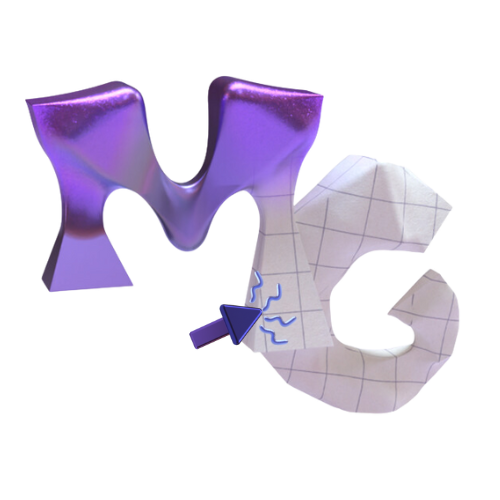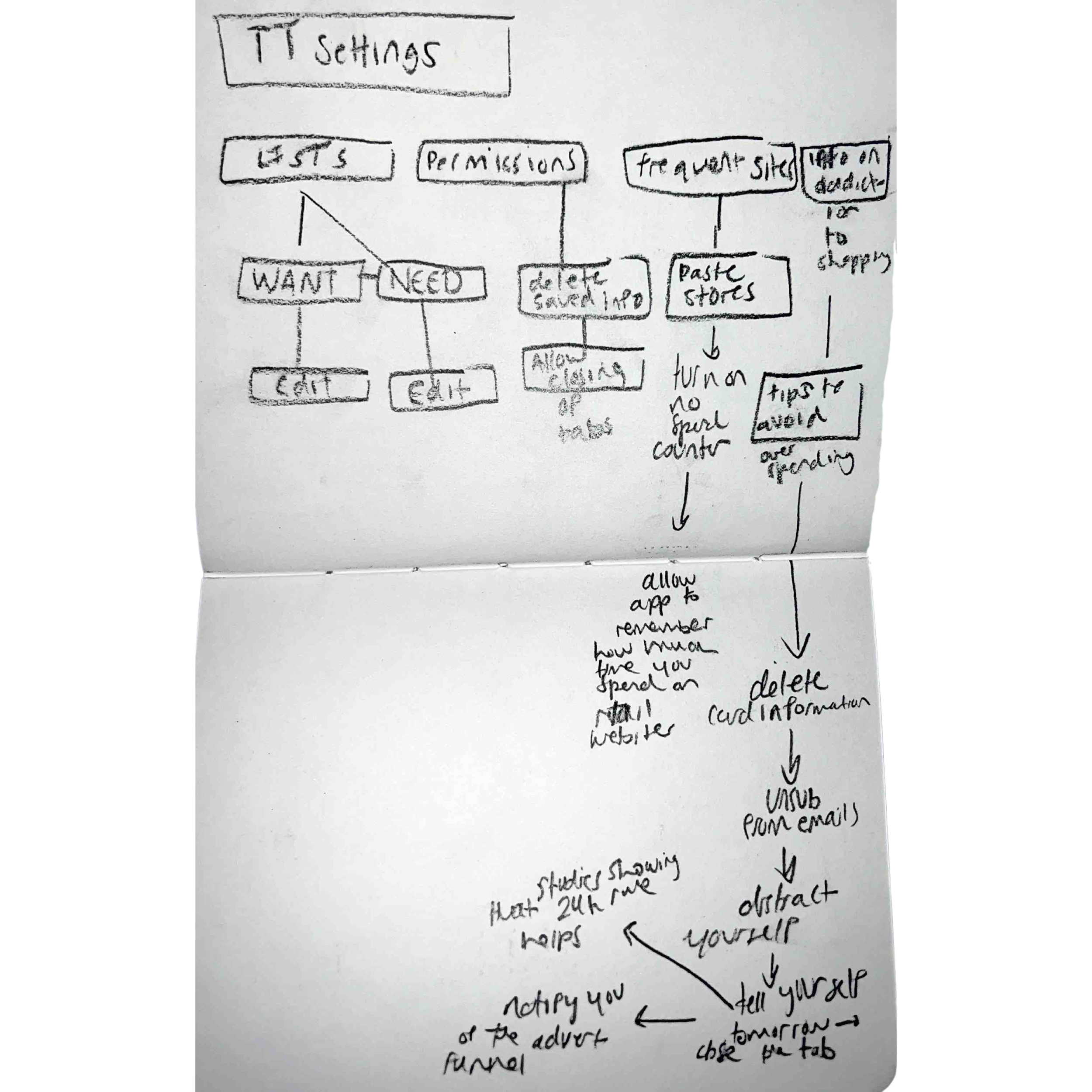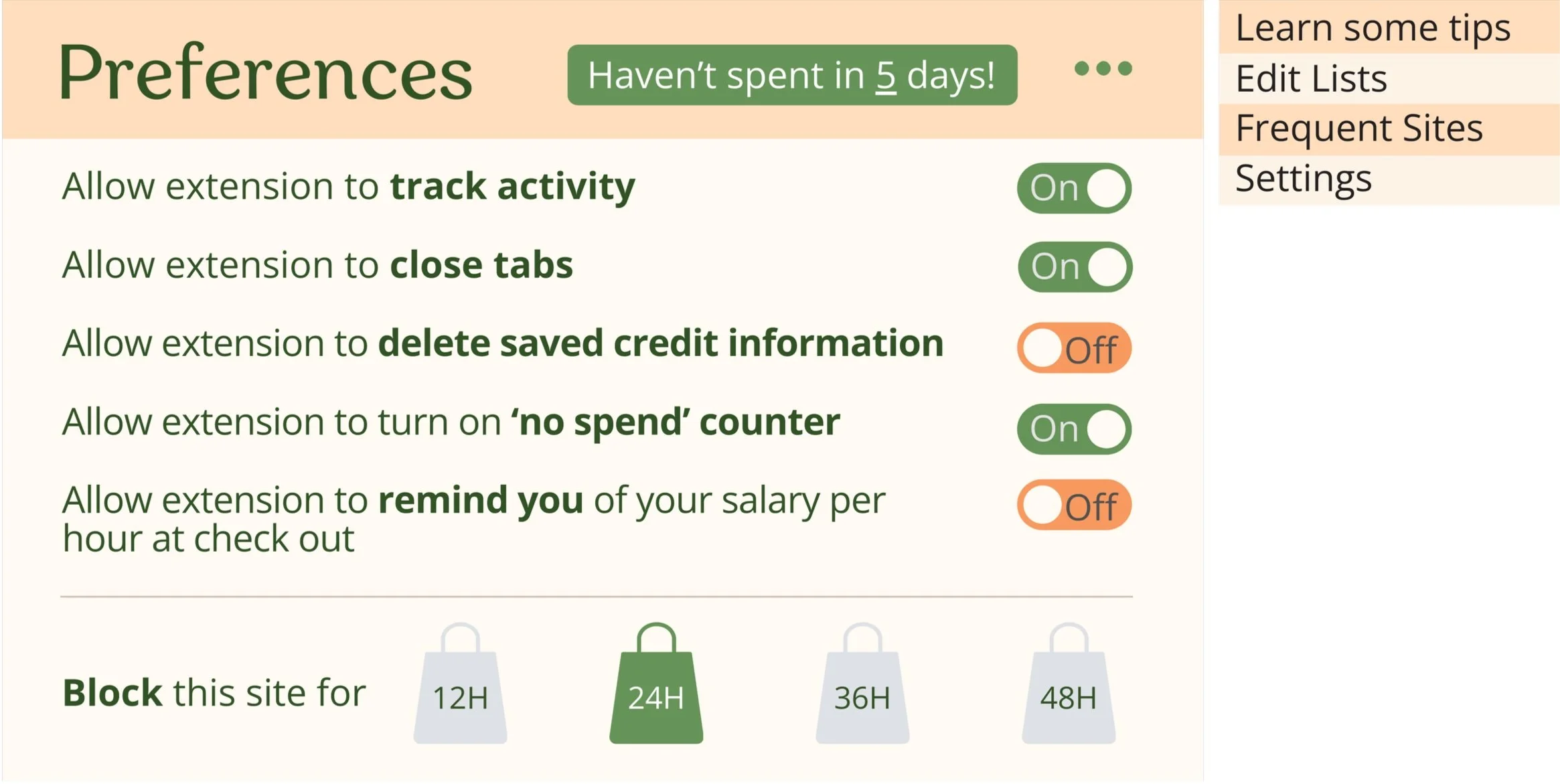Overview
Duration: May 2024-Aug. 2023, updates from 2024/5
I love to deep dive into topics I am interested in learning more about. And as someone who buys more than they should (I’m slowly improving this), I wanted to see what motivates one to do so and how to buy less. I researched and tried to create features to curb over-buying through a fun and bright moderating extension and mascot.
-
I looked into academic articles to research over-buying and shopping addiction.
-
Here, I check out some forums online to see what people’s opinions are on buying a lot of things, what their experiences are and what they do to not overbuy or have found out about themselves.
-
I started thinking of some features that might benefit users in the categories of what users can do before and during their online shopping.
-
I looked at some Chrome extensions that aim to also curb shopping addiction and analyzed their strong features and where there is room for improvement.
-
I looked at how I want to represent the brand and what the face of the extension will be.
Problem
Many people struggle with online impulse shopping. It can be detrimental to one’s finances and mental health. Often times, the user does not recognize the many ways they are being coaxed into making unnecessary purchases. Moreover, the user might not understand the underlying mental health issues driving their shopping addiction further. Users want to be able to curb their spending to save and not over-spend on unneeded items.
Solution
I designed a web-extension that informs users of how they are being easily susceptible to making unnecessary purchases, strategies on how to curb their purchasing and safety measures that hold them accountable and allow them to think through what they are wanting to buy.
The extension will include a number tips, features as well as an AI accompaniment that will live dialogue with the user. The machine learning model, Tito the Turtle, will be given information on the psychological aspect of impulse buying to better deal with each user and their needs.
Literature Review
In researching the topic of impulse buying, I found an abundance of articles and studies related to the matter. I wrote an article on the topic that I published on the Medium and will detail some of my findings below.
A study by Cambridge University (CU) in 2019 titled “Buying-shopping disorder — is there enough evidence to support its inclusion in ICD-11?” by Müller et al. investigated the possibility of impulse buying being considered a medical disease, specifically to be included in the next edition of The International Classification of Diseases (ICD-11).
The research of Sang-Hee Sohn & Yun-Jung Choi titled “Phases of Shopping Addiction Evidenced by Experiences of Compulsive Buyers” will also be covered to accompany the findings of the Cambridge study.
The CU findings detail that buying-shopping disorder (BSD) has been identified as an issue for at least 100 years in psychiatric literature, but has been largely ignored as an official illness for its supposed lack of research.
Researched in populations worldwide, BSD is a phenomena whereby a person is unable to control their excessive buying behaviour. They are continuously unable to pay their debts and cannot recognize that their spending habits are creating negative consequences for themselves and others (Müller et al., 375). It is especially prevalent in “developing consumer societies” (Müller et al., 375).
An episode of BSD is usually triggered by a negative event and the buying is used to escape or relieve negative feelings. However, at a certain point BSD becomes the “primary response to negative events and feelings” (Sohn and Choi 244; Müller et al., 375). This is what is called “retail therapy” or the beginning phase of the addiction (Müller et al., 375).
These purchases, which the person is unable to control, can be followed by regret. Moreover, the things purchased during these episodes are usually not used.
People with BSD often suffer from other comorbidities (more than one mental illness at once) such as depression, substance abuse, avoidance, obsessive-compulsive disorder (OCD) and borderline personality disorder (BPD) (Müller et al., 376). Those with BSD are also said to “experience higher levels of stress, anxiety, depression, and negative feelings than their counterparts in the general population” (Sohn and Choi, 250).
Sohn and Choi have identified five stages to what the CU study calls BSD:
Redesigned version parts of Table 1 and Figure 1 from Sohn and Choi page 247, 250
As we can see from the work of Sohn and Choi:
the process of becoming addicted to purchasing things is gradual. Each stage carries with it several negative feelings and states as the root (Sohn and Choi, 247).
The study lists many Codes for each of the phases to reveal to the reader the mindset behind the actions as they progress further into the addiction.
The key feelings in each stage of the addiction is first a negative feeling and the want to escape these feelings.
It then builds into using buying as a means of control, reaching a point where people are unable to pay their debts.
Then the person is anxious if they cannot purchase certain items and are buying recklessly.
Finally, the person shops constantly, thinks about shopping, are unwell if they do not shop and shopping is their primary response to any negative situation.
User Research
While researching people’s experiences on impulse purchases, I find that the literature confirms their experiences. People who impulse purchase have indeed felt a lack of control and negative feelings in their life as exemplified by the user below.
Others have just fallen into a habit of impulse buying due to other comorbidities.
In researching the contributing factors to impulse buying, aside from studies I found the experience of every day people on forums. Many who have experienced the strong grasp of the retail therapy mentality have formed rules for themselves to follow and tips they give to others.
Others who have had experiences reaching the latter phases of shopping addiction have shown they were able to get professional help.
Idea Generation
After conducting research into the symptoms, causes and possible remedies of shopping addiction I started forming some features that a Chrome extension might be able to provide to a user to curb their addiction or at the least create some strategies for users.
You will notice from the that the Dialogue does a lot of heavy lifting when it comes to informing and confronting the user. One of the larger jobs is the AI that would dialogue with the user whom I have named Tito (the turtle :p).
Below I have mapped out some possible paths of conversation and interaction the user might have with Tito.
Using the research on shopping addiction and ideation for possible solutions that the chrome extension can provide, here its corresponding persona.
Photo by cottonbro studio
It must be acknowledged that there’s a point at which an individual needs to seek professional help. We know that a lot of the time Buy-Shopping Disorder exists when there are other comorbidities such as anxiety and depression. In the case of Alexandra, it would be a good idea to seek help to address her underlying depression and dissatisfaction with work and develop some strategies, goals or coping mechanisms. Alongside counseling and therapy, the extension can be used as a daily aid in living out certain online shopping strategies.
Competitor Analysis
Unlike Honey, that tries to save you money while still purchasing items, Tactful Turtle will actually discourage you from spending completely (2025 Mary here, this was written pre discovering Honey was a scam*).
Most extensions encourage you to shop with the incentive being that you will save money or get a deal, when this is exactly what drives people to develop a shopping addiction or make unnecessary purchases.
You’ll notice that the majority of slogans or premises on shopping extensions are that they will “get the best price”, “find you deals” or “help you save” all the while encouraging the user to buy, which is quite counter-intuitive to saving.
Honey allows the user to gather promo codes and get money off of their purchases. It also tracks the prices of certain items and notifies the users. The same goes for Cently, Rakuten and other extensions.
Amazon Assistant is an extension that notifies users of deals and price comparison for similar items from different retailers. The same goes from CNET Shopping, PriceBlink, The Camelizer and more.
All these extensions are marketed to the user as ones that will help them save their money, rather than going to the root of the issue.
These extensions are focused on acquiring more while saving little, rather than saving completely.
In searching for some similar extensions, I was hard pressed to find extensions that had all the features I had arrived to in one, as well as ones that were used by a large user base (as of 2023).
Description:
“Spend Less detects when you’re on a seller’s website.”
“Spend Less delivers beautiful, motivational, and informative messages that help you become more aware of the sales funnel and marketing hacks being used on you.”
“If the website is where you want to be, simply dismiss the message and Spend. Less won’t interrupt you again during your session on the website.”
“If you’ve realized you’ve been sucked into just another sales funnel though, Spend Less will send you somewhere beautiful and interesting instead (where nobody is trying to take your money).”
Strengths:
Notifies users of deceptive marketing
Sends users encouraging words not to spend
Sends users to a different website if you wish
Weaknesses:
You can turn off the ‘dialogue’ the extension provides only after one time on any given website
The encouraging words are likely to be repeated
Description:
Allows the user to input websites frequently visited for shopping
Sets a time limit for the websites chosen so that it is blocked after the time is over
Strengths:
Keeps track of frequented websites
Blocks websites for a selected amount of time
Weaknesses:
Could provide the users statistics on how long they spend on frequent sites
Could offer to add additional sites that it senses the user has been on
You can lock certain websites but, the user could just decline to do so meaning it’s not making it difficult enough for the user to not buy
Description:
Allows the user to stop using a website for their desired amount of time by disabling it
Blocks websites
Claims it “uses behavioral psychology to help you spend less money on 200+ websites.”
Strengths:
Allows blocking of websites or timing out websites
Uses research to help the user save
Weaknesses:
Could provide more safeguards to the user to not use certain websites
Could be more involved in tracking the user’s activity on websites and reporting it to them
Brand Identity
In the beginning of searching for a brand identity, I wanted to think of something friendly that could dialogue with the user and accompany them through their browser.
I wanted to find an animal that was slow. It would represent the purpose of the extension which would be to make purchases slowly and save money.
After thinking of three common slow animals, I tried finding synonyms for being frugal.
I then chose the ones that are most familiar in meaning to the general public and last finding one that I could use illiterate with an animal.
I settled on Tactful Turtle with the turtles name being Tito. A plus was that turtles are green, as money is often associated with that color.
Coupled with the turtle, I also used the fable of the turtle and the hare to make the slogan for the extension.
The extension research has shown the extensions contain the essence of what an ideal extension that should deter its user from shopping should have.
However, each of them are incomplete either in features or may become redundant over time.
By having AI able to dialogue with the user, armed with psychological research, countless tips as well as several methods of deterrence, there is a much better chance that the user will benefit from it rather than remove it from its installations over time.
I began to sketch out possible menu paths especially for the settings of the extension since that is where the user will spend a considerable amount of time.
All the following settings and pieces of information are accessible from the initial frame of the extension icon below which would then move into another window if necessary.
I first created the toggles for user permissions or what the extension is allowed to do.
There will be an option for the user to allow Tito to erase their saved credit information and for him to close the user’s tabs when the user agrees to time out certain sites. For the next permission, the user must grant Tito the permission to track which sites they most frequently visit should be enabled as well. Finally, users can turn on or off a spend counter that tracks how long it has been since they made a purchase online for something not on their list.
From the pop up of the extension the user is able to go into their additional settings and other features.
Upon downloading the extension, the user must input their wants and needs list.
In order for the AI to recognize items, the AI would have to be fed a large variety of items that are shopped for. If the AI cannot recognize what the user wrote the user can enter that word into Tito’s lexicon to be reviewed and added to its official lexicon.
Otherwise, the user can simply list their item with a broad term like ‘clothing’ or ‘stationary’ and the extension should be able to sense if or if not the website they have visited coincides with any category.
The user is able to edit their list at any time through their settings. However, the ‘wants’ and ‘needs’ list will not be able to be turned off as it is an essential component of the extension.
Then, there is the user’s ability to enter in their most frequently visited website. Once entered, the extension will sense that a user is on the frequent site and confront them about it through chat dialogue and other methods. The AI chat will be fed research on what shopping disorder is and ways to combat it in early stages so that it can more effectively converse with the user.
The user will be able to enter the name or link of the websites they visit most often. The extension will be fed links and names to retail websites.
The extension will link to resources for the user to become more aware of their shopping habits. It will link tips and research to display to the user how the market ropes them into making unnecessary purchases.
Other than the main permissions, the user can enable some extra ones. Extras being allowing the extension to use sound alerts or alert the user of sale’s on the website to deter them.
Additionally, the user would be able to add the contact of a third party for someone to hold them accountable. If the user blocks a website and wishes to unblock it, the third party will need to give them the four digit code they receive.
Next Steps and Takeaways
This exercise is most probably one of my favourite of the bunch so far. It is always important to stop and think of the actions we are going through with. Being mindful is a method of pulling oneself out of mindless actions. By providing users and consumers with a way to pull themselves out of an addiction or proclivity they may not even realize they have, they can begin to live a healthier life.
I would like to be able to involve users and conduct research among self-proclaimed impulsive shoppers to to see if the features and the extension as a whole would benefit them. Additionally, it would be fun to continue and get to prototyping.
Sources
-
Müller, Astrid, et al. “Buying-Shopping Disorder — Is There Enough Evidence to Support Its Inclusion in ICD-11?” CNS Spectrums, vol. 24, no. 4, Aug. 2019, pp. 374–79. Cambridge University Press, https://doi.org/10.1017
/S1092852918001323.Sohn, Sang-Hee, and Yun-Jung Choi. “Phases of Shopping Addiction Evidenced by Experiences of Compulsive Buyers.” International Journal of Mental Health and Addiction, vol. 12, no. 3, June 2014, pp. 243–54. Springer Link, https://doi.org
/10.1007/s11469-013-9449-y. -
-























